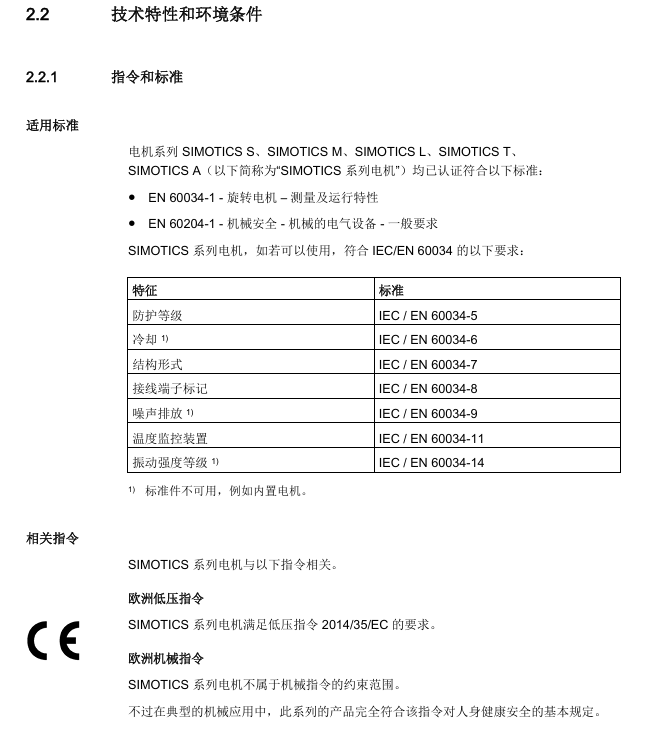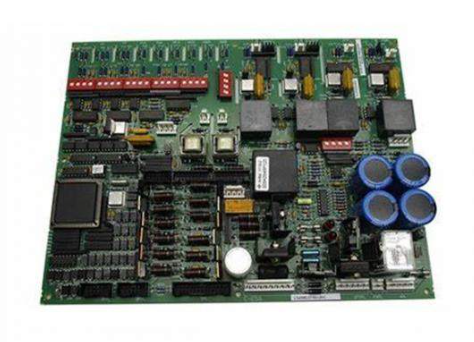SIEMENS SIMOTICS L-1FN3 Linear Motor Operating Instructions
SIEMENS SIMOTICS L-1FN3 Linear Motor Operating Instructions
Overview
SIMOTICS L-1FN3 series permanent magnet synchronous linear motor operation guide, covering the entire life cycle process from receiving, installation to scrapping. The core information includes: the motor is a modular structure (including primary components, secondary components, and optional precision coolers/secondary coolers), with protection level of IP65 for primary components, minimum IP23 after installation, suitable medium temperature of * * -20... 220 ° C * * (special sealing letter needs to be replaced for low temperature), cooling method is water cooling (maximum pressure of cooling circuit is 10 bar), and needs to be used with SAX. electric actuators or SKD./SKB./SKC. electric hydraulic actuators; The manual emphasizes the safety risks of strong magnetic fields (the suction force of the secondary component permanent magnet can reach several kN, and those wearing pacemakers need to maintain a distance of ≥ 500mm), electrical connection specifications (must comply with SELV/PELV standards, and the shielding layer must be reliably grounded), and safe operation throughout the entire process. At the same time, it provides detailed guidance on mechanical installation dimensions, fault handling, maintenance, and waste disposal (secondary components need to be demagnetized at 300 ° C or above) to ensure the safe and stable operation of the motor.
Product Technical Characteristics
1. Basic parameter table
Parameter category specific specifications
Motor type: Permanent magnet synchronous linear motor
Modular structural form (primary components: including 3-phase winding+main cooler; secondary components: permanent magnet+steel base; optional precision cooler/secondary cooler)
Protection level for primary components: IP65 (compliant with DIN EN 60034-5); Motor after installation: minimum IP23 (determined by machine design)
Cooling method: Water cooling (maximum pressure of cooling circuit is 10 bar, interface is G1/8 pipe thread, in accordance with DIN ISO 228-1)
Thermal protection primary component with built-in 1 PTC thermistor (response threshold+120 ° C, compliant with DIN 44081/44082, Temp-S circuit)
Temperature monitoring Temp-F circuit (1FN3xxx-xxxx-xxx1 with KTY84 sensor, 1FN3xxx-xxxx-xxx3 with Pt1000 sensor)
Insulation Class Thermal Class 155 (F Class, compliant with EN 60034-1)
Electrical interface 1FN3050: Fixed cable (with/without connector); 1FN3100-1FN3900: Integrated connector+cover plate
2. Environmental and adaptation requirements
Temperature range:
Conventional: -5... 220 ° C; Low temperature: -20... 150 ° C (special sealing letter needs to be replaced: DN15... 50 is 428488060, DN65... 150 is 467956290)
Storage/transportation temperature: -5... 40 ° C (condensation and freezing are not allowed)
Rating reduction factor: When the installation height is greater than 2000m, the voltage needs to be reduced (such as 0.877 for 3000m and 0.656 for 5000m)
Adaptive actuator: It needs to be selected according to the driving force and stroke, as shown in the following table:
Applicable scenarios for actuator series driving force stroke
SAX. 800N 20mm DN ≤ 50 motor, light load
SKD. 1000N 20mm DN ≤ 50 motor, high load
SKB. 2800N 20mm DN ≥ 65 motor
SKC. 2800N 40mm DN ≥ 65 motor, large stroke requirement

Core safety requirements
1. Strong magnetic field safety (highest priority)
Risk point: The secondary component contains permanent magnets, and there is still a strong magnetic field in the power-off state. The suction force can reach several kN (equivalent to squeezing hundreds of kg of heavy objects), and the magnetic field strength can reach 3mT at a distance of 150mm (in accordance with Directive 2013/35/EU)
Safety measures:
Individuals wearing pacemakers/insulin pumps must maintain a distance of ≥ 500mm;
The installation of secondary components requires at least 2 people to work, wear gloves, prepare 3kg non-magnetic hammers and 10 ° -15 ° hardwood wedges (anti extrusion rescue);
Only remove the packaging of secondary components before installation, and it is forbidden to remove multiple packages at the same time. Do not place them side by side when they are not fixed;
It is prohibited to bring magnetic items (watches, steel tools) into the secondary component sensing area.
2. Electrical safety
Power requirements: Only allow connection to SELV (safe low voltage) or PELV (protective low voltage) power supply;
Induced voltage risk: When the primary and secondary components move relative to each other, the cable interface will generate induced voltage, which needs to be operated after power-off. It is forbidden to touch uninsulated interfaces;
Grounding and shielding:
Equipment with protection level I must be reliably grounded (to prevent contact voltage);
At least one side of the cable shielding layer is grounded through the grounding shell, and unused core wires need to be insulated or grounded;
The shielding layer of the power cable needs to be connected to the power module over a large area, and the protective grounding wire (PE) should be directly connected to the power module to prevent high discharge current from damaging the equipment.
- EMERSON
- Honeywell
- CTI
- Rolls-Royce
- General Electric
- Woodward
- Yaskawa
- xYCOM
- Motorola
- Siemens
- Rockwell
- ABB
- B&R
- HIMA
- Construction site
- electricity
- Automobile market
- PLC
- DCS
- Motor drivers
- VSD
- Implications
- cement
- CO2
- CEM
- methane
- Artificial intelligence
- Titanic
- Solar energy
- Hydrogen fuel cell
- Hydrogen and fuel cells
- Hydrogen and oxygen fuel cells
- tyre
- Chemical fiber
- dynamo
- corpuscle
- Pulp and paper
- printing
- fossil
- FANUC
- Food and beverage
- Life science
- Sewage treatment
- Personal care
- electricity
- boats
- infrastructure
- Automobile industry
- metallurgy
- Nuclear power generation
- Geothermal power generation
- Water and wastewater
- Infrastructure construction
- Mine hazard
- steel
- papermaking
- Natural gas industry
- Infrastructure construction
- Power and energy
- Rubber and plastic
- Renewable energy
- pharmacy
- mining
- Plastic industry
- Schneider
- Kongsberg
- NI
- Wind energy
- International petroleum
- International new energy network
- gas
- WATLOW
- ProSoft
- SEW
- wind
- ADVANCED
- Reliance
- YOKOGAWA
- TRICONEX
- FOXBORO
- METSO
- MAN
- Advantest
- ADVANCED
- ALSTOM
- Control Wave
- AB
- AMAT
- STUDER
- KONGSBERG
- MOTOROLA
- DANAHER MOTION
- Bently
- Galil
- EATON
- MOLEX
- Triconex
- DEIF
- B&W
- ZYGO
- Aerotech
- DANFOSS
- KOLLMORGEN
- Beijer
- Endress+Hauser
- MOOG
- KB
- Moxa
- Rexroth
- YAMAHA
- Johnson
- Westinghouse
- WAGO
- TOSHIBA
- TEKTRONIX


Email:wang@kongjiangauto.com























































































































